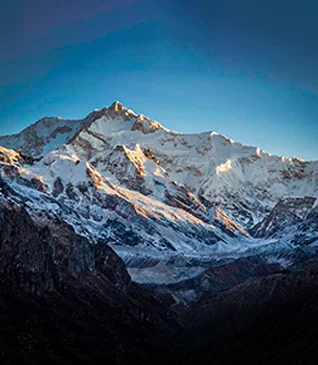Summer is a vibrant time in the Himalayas. The weather is beautiful, the sky is clear, you can see the meadows verdant green and the flowers are blossoming in their vivid shades. Summer trekking is an exhilarating pursuit, however, you need to be well-prepared for it for a good experience. In this article, we will delve into all the ways in which you can prepare for a summer trek and make the most of your adventure in a safe way.
What Makes Summer Treks So Special?
Optimal Weather Conditions
Summer brings with it mild temperatures and extended daylight hours, creating ideal conditions for trekking adventures. With warmer temperatures and clearer skies, trekkers can fully immerse themselves in the natural surroundings without the hindrance of inclement weather.
Abundance of Wildlife and Flora
The summer season brings a vibrant tapestry of flora and fauna to life, transforming the wilderness into a kaleidoscope of colors and sounds. From blooming wildflowers to bustling wildlife activity, trekkers have the opportunity to witness nature's spectacle in its full glory.
Accessible Trails
Many trails that may be inaccessible during other seasons due to snow or mud become open and accessible in the summer months. This opens up a plethora of options for trekkers to explore diverse landscapes ranging from alpine meadows to rugged mountain peaks.
Sense of Freedom and Adventure
With longer daylight hours and warmer temperatures, summer trekking offers a sense of freedom and adventure, unlike any other season. Trekkers can embark on epic journeys, push their limits, and discover hidden gems tucked away in remote corners of the wilderness.
Physical and Mental Well-being
Trekking in the summer provides a perfect opportunity to rejuvenate both the body and mind. The physical exertion of hiking combined with the therapeutic effects of nature can reduce stress, improve mood, and enhance overall well-being.
Tips To Prepare for Your Summer Trek
Research Your Destination
Before setting out, conduct thorough research on your chosen trekking destination. Familiarize yourself with the terrain, weather patterns, altitude, and any potential hazards you may encounter along the way. This knowledge will help you plan accordingly and make informed decisions during your trek.
Get Fit
.webp)
Trekking can be physically demanding, requiring endurance, strength, and agility. Start a training regimen well in advance of your trek to build up your fitness levels. Incorporate cardio exercises, strength training, and hikes with a weighted backpack to simulate trekking conditions.
Pack Light, Pack Right
Packing smartly is crucial for a comfortable trekking experience. Opt for lightweight and moisture-wicking clothing that dries quickly and provides protection from the sun. Invest in a sturdy, well-fitted backpack and pack only the essentials, including water, snacks, first-aid kit, navigation tools, extra layers, and a lightweight tent if camping overnight.
Stay Hydrated and Nourished
.webp)
Proper hydration and nutrition are essential for sustaining energy levels during your trek. Carry an adequate supply of water and electrolyte-rich drinks, and replenish fluids regularly. Pack lightweight, nutrient-dense snacks such as nuts, dried fruits, energy bars, and trail mix to fuel your body throughout the day.
Prepare for the weather
Summer weather can be unpredictable, with sudden changes in temperature, rainfall, and thunderstorms. Stay informed about weather forecasts for your trekking area and pack appropriate clothing and gear for varying conditions. A waterproof jacket, sturdy hiking boots, and a lightweight hat are essential items to keep you dry and protected from the elements.
Safety First
.jpg)
Prioritize safety at all times during your trek. Carry a fully charged mobile phone with emergency contacts programmed in, along with a map, compass, or GPS device for navigation. Let someone know your itinerary and expected return time, and check in with them regularly if possible. Familiarize yourself with basic first-aid techniques and carry a comprehensive first-aid kit for minor injuries.
Leave No Trace
Respect the environment and leave minimal impact on the natural surroundings. Follow Leave No Trace principles by packing out all trash, staying on designated trails, and avoiding damage to vegetation and wildlife habitats. Leave the wilderness as pristine as you found it for future generations to enjoy.
Train Your Mind
.webp)
Trekking can be mentally challenging, especially during long and arduous stretches. Practice mindfulness techniques such as deep breathing, meditation, and positive visualization to stay focused and resilient during challenging moments. Embrace the journey with an open mind and a spirit of adventure, allowing yourself to fully immerse in the beauty of nature.
By following these tips and adequately preparing for your summer trek, you'll be well-equipped for your summer adventure. Remember to stay safe, stay hydrated, and savour every moment of the journey as you explore new horizons and create lasting memories along the way.





.webp)










.webp)


